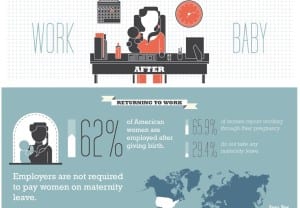If you are concerned about taking a leave from your job, you may be wanting to learn more about the Family Medical Leave Act (FMLA). The Act, which first took effect back in 1993, provides a certain amount of unpaid medical leave for some American employees. While the Act is fairly straightforward in its wording, there are certain terms and stipulations you may need to look into further to see if your particular situation is covered.
Who Generally Qualifies for FMLA
The Family Medical Leave Act (FMLA) is intended to help workers who need to take an unpaid medical leave of up to 12 weeks during a year-long (12 month) period. Your reason for taking the leave must be either to take care of yourself or a close family member in need of medical care. Another reason for the leave could be the birth or adoption of a child, or the need to care for a new foster child. In every case, only eligible employees qualify for the leave. Eligibility is generally determined by a variety of factors, including how long you have worked for your employer (usually a minimum of a year, and/or 1250 hours).
Company size may also effect your employer’s ability to provide the leave. If you have any doubts about whether or not your employer can provide FMLA benefits or whether or not you’re specifically eligible, you should contact your company’s human resources department and ask.
Some Important Things to Know
Here are other important things to consider. The Act stipulates that the medical condition being cared for must be your own, or else your parent’s, child’s or spouse’s. In some cases, you may be asked by your employer to provide certification from your health provider to prove your condition. Employers only have a limited amount of time to ask for such proof. Some states have also expanded the definition of a close relative to include other relationships such as a parent-in-law, a grandparent or even a sibling, so don’t just assume that your case doesn’t fall within the law. It’s worth checking to see if you qualify.
It may also be important to check in with your company regarding their policy about using other leave first. Although a very serious medical condition or the need for time to bond with your baby makes family medical leave attractive, recall that is unpaid medical leave. If you’re able to use up paid leave first, that could be a big financial help. However, even if you do that, you’re still entitled to the full 12 weeks in addition to your other leave, if you qualify for FMLA and if you still need it.
Checking out the Department of Labor’s information regarding FMLA is a good first step toward understanding the law. They provide an overview of the law as well as various fact sheets to help answer your questions. The fact sheets will answer a lot of your questions regarding qualifying reasons for the leave. They also address the broader parameters of medical leave for military caregivers (those caring for family members who are servicepeople). Once you’re familiar with the law, take your questions to your company’s HR department so you can be assured of fully understanding the Family Medical Leave ACT (FMLA).
Related Resource: Is an HR Degree Worth It?
